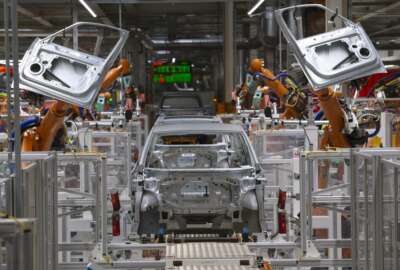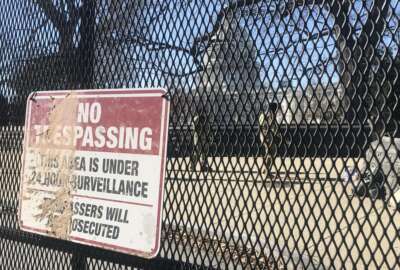
Can government fix vaccine distribution screwup?
Biden administration has to help straighten out the COVID-19 vaccine chaos at the state level.
The hope produced by success of the vaccine tests quickly turned sour as millions scramble to actually obtain the bloomin’ shots. You might say the vaccine rollout has been the ultimate customer experience failure.
The Trump administration plan was better then it gets credit for, not to say it was excellent nor got the execution attention it perhaps needed from the White House. The Centers for Disease Control and Prevention did have a plan for quite a while. The CDC plan is still there on the agency’s website, having apparently survived the online scrubbing that’s commenced with the Biden administration.
To its credit, the Biden crew has, at the least, made distribution an early high priority. It would like to spend $25 billion to get the shots made and get out there. And ensure “not just the wealthy and well-connected” get a vaccine. It’s new pandemic plan outlines an “aggressive vaccination strategy” running up and down the supply chain from needle tip to whatever kind of factory they cook up vaccines in.
Bill and Melinda Gates, who are experts in fewer things than they talk about, nevertheless had a few cogent observations in an interview with the Washington Post.
Bill Gates said, “The logistics should be very, very simple. You just go online, say when you’re available, you get some QR code.” Well, it’s simple to describe, anyhow, like looking at a 12-cylinder engine from the outside. Or uploading a file to the cloud. He said the government should have had a website ready, backed by a rules engine for controlling the order of receiving vaccines, such that people could sign up and later prove digitally that they had been vaccinated.
All well and good, but the government doesn’t have a great track record at launching sites like that in a hurry. Still, Gates is correct in that the simpler the concept of operations, the easier it is to back it up with a reliable website.
You hear a lot of references to letting scientists be in charge of this or that. Baroque hierarchies of who should be first in line further mitigate the chances such a portal would work — or that scientists could figure it out. Notwithstanding that what the government really needs is logistics experts, contrast the call for scientists with the various claims of priority.
To wit: Old people — but exactly how old? Teachers. Medicine industry employees. Police and firefighters. Essential workers in transportation, food service, housing construction, information technology, law, media. Health care workers. Among that last group, who exactly? A radiologist who can evaluate images from her large monitor at home, or the technician who rolls the patients into the MRI machine?
So many people claim priority, it’s starting to look like a stampede at a Las Vegas buffet.
Overlayed on all of that is the Biden innovation of a COVID-19 Racial and Ethnic Disparities Task Force. It’s not wrong to take into account how different groups might have different levels of access to health care or experience different average outcomes. It’s simply a mistake to think it doesn’t complicate things, or that the distribution plan is a simple equation for scientists to solve.
At this point, it may be too late for the federal government to totally digitize the vaccine process. Processes, I should say. Factory-to-arm takes a system of systems including procurement, physical movement, and, above all, allocation decisions.
Beyond the federal level, people visiting state and county web sites have found lots of confusion. This is where the needle hits the shoulder. In too many locales, people face crashing sites. Or sites that initially fail to incorporate all of the local rules, so people who thought they had appointments for a vaccine — perhaps in another jurisdiction — later find they don’t.
People are starting to ask for vaccines anywhere they can think of. The big medical practice where my GP works had to send an email saying, in effect, “No, we don’t have vaccines, don’t know when we’ll get them, and don’t have a waiting list. So stop bothering us.”
Our sister station WTOP has reported all of the scrambling in the District of Columbia, Virginia and Maryland.
While this all straightens out, a good read deals with what to do about the potential next pandemic. This comes from the privately-funded Bipartisan Commission on Biodefense. It has an interesting list of corporate and academic backers.
Two of my favorite politicians, former Connecticut Sen. Joe Lieberman and former Department of Homeland Security Secretary — among other things — Tom Ridge, chair the commission. They point out a warning the commission issued in 2015 that the nation lacked a coherent plan for biodefense. The focus then was as much on bio terrorism as a natural forces pandemic.
The latest report — which Lieberman and Ridge have been making the rounds to hawk — has much more detail on the apparatus needed to deal with early detection and mitigation of future pandemics.
In an interview, I asked Lieberman which department should be in charge: DHS, Health and Human Services or maybe even Defense? He answered: “The White House.”
I was personally thinking the government might have partnered directly with CVS, Rite Aid, Walgreens, Walmart and all the others in urban and rural areas. Require them to be open 24 hours a day for the vaccination period. Then everybody gets a specific time period to visit, and a little wallet card when they walk out.
Nearly Useless Factoid
By Alazar Moges
Although he was the nation’s eighth president, Martin Van Buren was the first of the men to hold this highest office who was born a citizen of the United States and not a British subject.
Source: History
Copyright © 2025 Federal News Network. All rights reserved. This website is not intended for users located within the European Economic Area.
Tom Temin is host of the Federal Drive and has been providing insight on federal technology and management issues for more than 30 years.
Follow @tteminWFED





